How to grow a cactus from seeds at home?
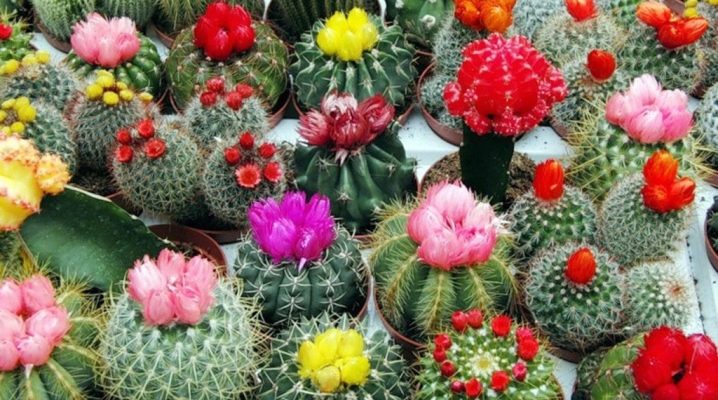
The cactus is an unusual and interesting plant and has a large following. Due to its wide distribution and high popularity, the issue of its seed reproduction is quite relevant. Many novice growers mistakenly believe that breeding cacti with seeds is a difficult and tedious process. However, subject to certain rules and strict adherence to the recommendations of experts, everyone can grow a thorny plant.
The right time for sowing
Before you start growing a cactus from seeds, you must take into account that the most favorable time for sowing is early spring. The choice of this time of year for the start of planting work is not accidental: it is at this time that a gradual increase in daylight hours occurs and the intensity of sunlight increases.
So, the March crops by the beginning of winter become quite large and viable. The past 6 months are quite enough for them in order not only to gain in mass, but also to accumulate a sufficient amount of nutrients necessary for wintering. If the seeds are planted at other times of the year - for example, in summer, then they simply will not have enough time to gain strength before the onset of cold weather and a reduction in daylight hours.
Planting seeds in winter gives good results, however, young shoots will need additional lighting - such that the total duration of daylight hours is at least 12 hours. In addition, the plants will need to be provided with greenhouse conditions of temperature and humidity, which is quite problematic to do in the winter months. Autumn plantings are in principle excluded. During this period, nature falls asleep, the rhythm of plant development slows down and germination of seeds will not give the desired result.
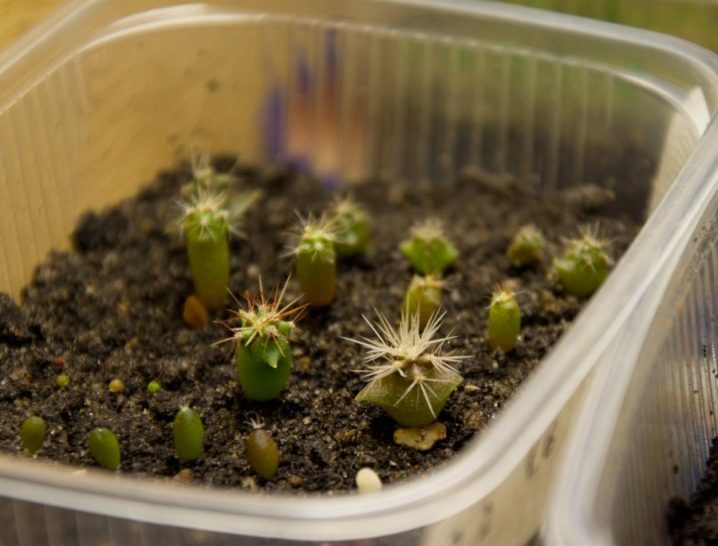
Seed selection
The choice of seed is a responsible task, and it is better for novice growers to purchase it in a specialized store.
It is recommended to buy seeds of old and proven varieties with good germination and survival rate.
These plants include cactus variety "Fidget", which belongs to the genus Echinocereus Engelmannii and is distinguished by its unpretentiousness and beautiful flowering. Stable germination is demonstrated by the seeds of cacti of the genus Lobivia (Latin Lobivia), numbering about 100 different species.
Another important point to pay attention to when buying seed is its freshness, since the seeds have a shelf life of only 6 months. Products should be purchased only from trusted manufacturers who have proven themselves only on the positive side. One of them is company "Gavrish", which produces excellent seed and has long been present on the domestic market.
More experienced cactus lovers can get the seeds themselves. To do this, they need to wait for the flowering of two unrelated individuals belonging to the same variety, and use a brush to cross-pollinate. Then you just need to wait for the appearance and ripening of the fruits, and start collecting seeds. The disadvantage of this method is to obtain the same offspring and the duration of the process.
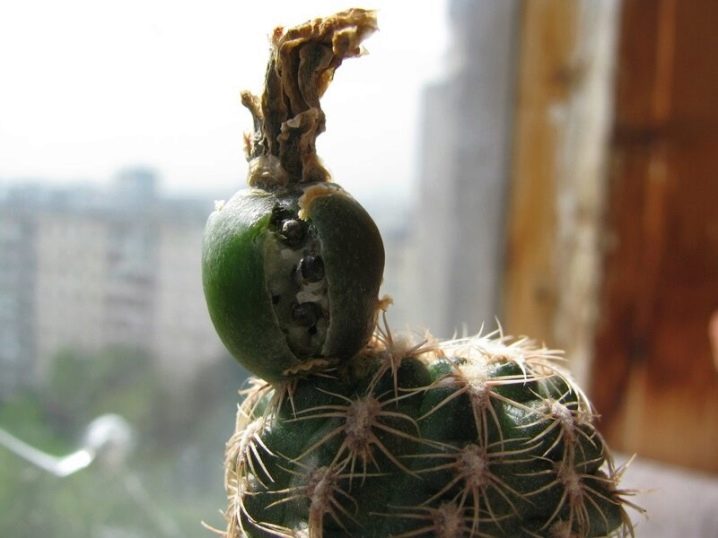
Pot and soil
After the planting material is selected, it is necessary to start preparing the nutrient substrate.The best option would be to buy special soil in the store, but if this is not possible, then you can prepare the soil mixture yourself. To do this, they take washed river sand, leaf humus, crushed charcoal and mix them in a 2: 2: 1 ratio. The prepared composition is placed on a baking sheet and sent to the oven.
Disinfection is carried out within 15 minutes at a temperature of 200 degrees. The procedure is mandatory and is due to the lack of a mechanism for resistance to infectious diseases in cactus seeds. Then drainage is prepared, which is used as fine expanded clay or perlite. It is also necessarily disinfected by pouring boiling water over it.
It is better to plant seeds in a shallow plastic container, the height of which does not exceed 8 cm. The bottom of the cup must have a perforation that ensures the free outflow of excess liquid. As for the color of the pots, the best option would be white matte containers that are resistant to absorbing sunlight and protect young growth from overheating.
Besides, the cups should have transparent lids that will cover the planted seeds. Before sowing, the dishes are subject to mandatory boiling or processing with a solution of potassium permanganate. Disposable salad containers are quite suitable as such containers. Of course, they should not be boiled, but it is quite possible to process them with potassium permanganate.

Landing
Before planting seeds in the ground, it is recommended to soak them in a weak solution of potassium permanganate. This event will help not only prevent the development of fungal infections, but also awaken the seeds. Their residence time in the solution should not exceed 12 hours. While the seeds are soaking, a 1-2 cm thick drainage layer is placed in the prepared container and 3-4 cm of the prepared substrate is poured on top. In this case, 1/3 of the pot should remain empty.
Then the soil is spilled with warm boiled water, and shallow holes are made in it with a toothpick or a match at a distance of 2 cm from each other.
Seeds should be planted one at a time in each hole, without sprinkling with earth, since the germination of cacti is carried out strictly on the surface of the substrate.
After all the seeds are distributed over the holes, the soil is gently sprayed with water from above, the container is closed with a transparent lid and placed in a warm, well-lit place. The optimum temperature inside the greenhouse will be +25 degrees. If the room is too cold, then it will be much more difficult to germinate the seeds, and already at +15 degrees, the process may stop altogether.
A couple of weeks after sowing, seed germination will become clearly visible, and with the appearance of the first thorns, the plants will need to be aired daily by removing the lid for a few minutes. Young seedlings are watered either with a spray bottle or by immersing the pot in a bowl of water. As soon as the top layer of the substrate gets wet, the container is removed from the basin and placed on a tray to drain excess liquid. In order to avoid the appearance of fungus, many breeders recommend using 0.5% solution of "Chinozol", diluting one tablet of the drug in two liters of water.
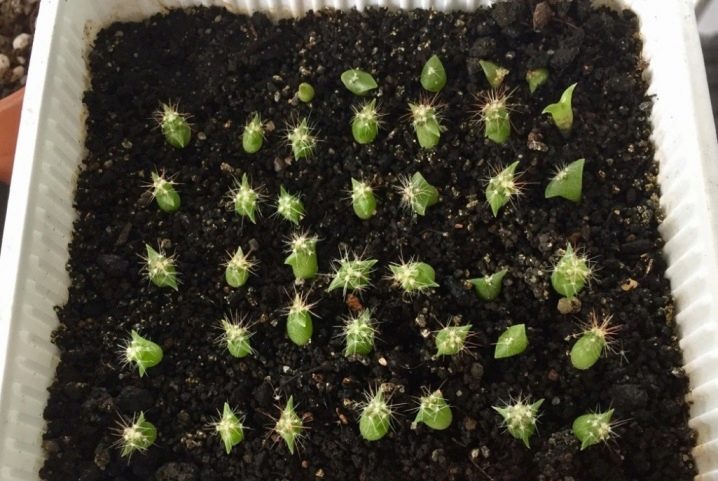
Further care
Growing young growth at home is not difficult at all. To do this, it is necessary to adhere to certain rules of care, which consist in regular watering, feeding, as well as creating comfortable conditions of temperature, light and humidity.
Watering
In order to grow a healthy and strong cactus, it is necessary to carefully observe the water balance. In this regard, the plant is quite demanding, and with insufficient watering or excessive moisture, it can die.
Watering a growing cactus should be done immediately, as soon as the substrate dries out to a depth of 1 cm.
The procedure is best performed with a pipette or spray, and never use a watering can. At first, water for irrigation should be boiled and used only when warm.
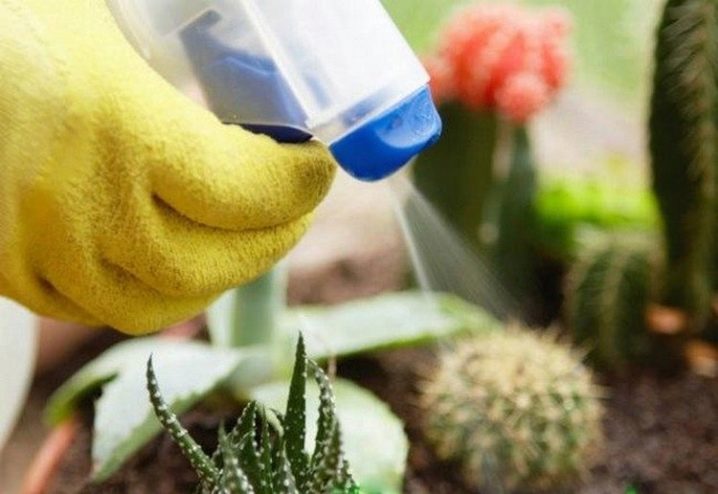
Temperature
As mentioned above, it is better to sow seeds in spring: then the period of active growth will fall on the natural increase in daytime temperatures and the increasing amount of solar heat every day. So, the optimal temperature for growing cacti is +23.25 degrees Celsius. At night, the temperature is allowed to drop to +13.18 degrees, provided that all the seeds have already sprouted and small cacti have formed. The maximum allowable temperature for growing a flower is +30 degrees.
Lighting
Young cacti need a long day of light and a sufficient amount of ultraviolet radiation. but the lighting of the flower should be diffused. It is unacceptable to expose young immature plants to direct sunlight. The optimal location for the pots will be a table near the window. Older and stronger plants can be placed on the windowsill, placing them in the shade of large flowers.
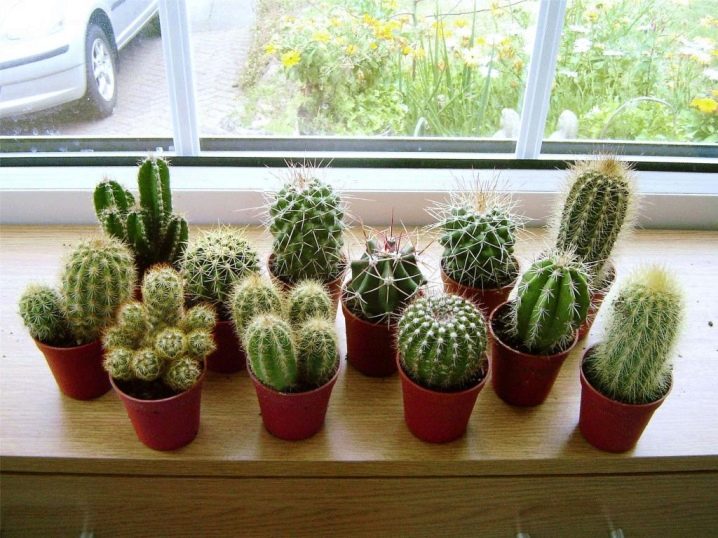
Top dressing
Feeding young shoots should be done in small quantities. every 2 weeks until October. As additives, special mineral preparations for cacti are used, containing a sufficient amount of calcium, phosphorus and potassium with a minimum presence of nitrogen.
After the plant gets stronger and forms a strong root system, it is periodically fertilized with a potassium phosphate solution added to the irrigation water.
Sprout transplant
Young plants should be transplanted 3-4 months after planting. To do this, take separate pots or plastic glasses with a volume of 0.5 liters and make several holes at the bottom. Then expanded clay, crushed stone or crushed brick is laid on the bottom of each of them and the same soil is poured that was used for planting. The pots should be filled in such a way that so that a margin of 1-2 cm remains up to the top of the glass walls. In the center of the substrate, a small depression is made with a finger, a small cactus is taken out of the greenhouse and, together with a lump of earth, is transferred to a new place.
The soil around the plant is carefully compacted and sprayed with a spray bottle. After the young cactus takes root, watering is carried out from a regular watering can with a splitter. You can transplant cacti to a permanent place in capital pots not earlier than upon reaching the age of one year. In the future, the plants are transplanted as they grow.
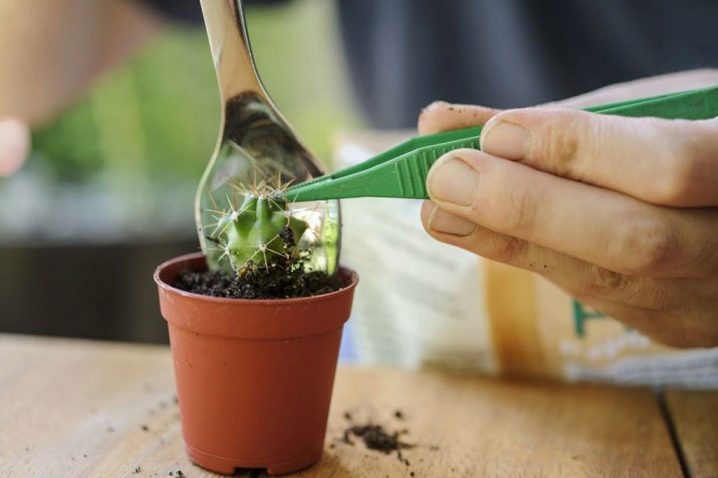
Useful Tips
Often, when growing cacti from seeds, certain difficulties arise. Below are the most common problems, as well as methods for solving them.
- The first shoots usually appear 2 weeks after sowing, and the last ones - after a month and a half. If, after the specified period of germination has not occurred, then the pot is removed to a cool room and watering is stopped for 1.5-2 weeks. Then the crops are returned to their original place and care is resumed. This method is based on a state of stress, which helps to awaken the seeds and make them sprout.
- If a young cactus does not take root, then the matter is most likely in care errors or an onset of the disease. In order to prevent the infection from spreading to neighboring plants, the diseased individual is removed and thrown away. The remaining specimens are treated with a solution of potassium permanganate and constantly monitored.
- If no visible diseases have been identified in the plant, but nevertheless its condition leaves much to be desired, you can try to sharply lower the temperature and reduce watering. Such an emergency change of scenery makes the plant go into hibernation, after which it is transplanted into a new substrate, awakened and transferred to a general care regimen.
Cacti grow very slowly and even after two years the flower grows no more than 4 cm.However, subject to all the rules of cultivation and care, already in the fourth or fifth year of life, he is quite capable of pleasing his owners with a beautiful and lush color.
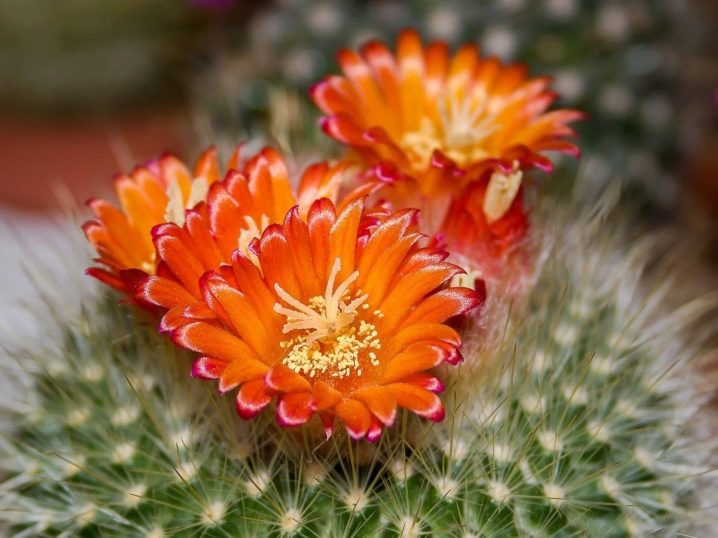























































The comment was sent successfully.